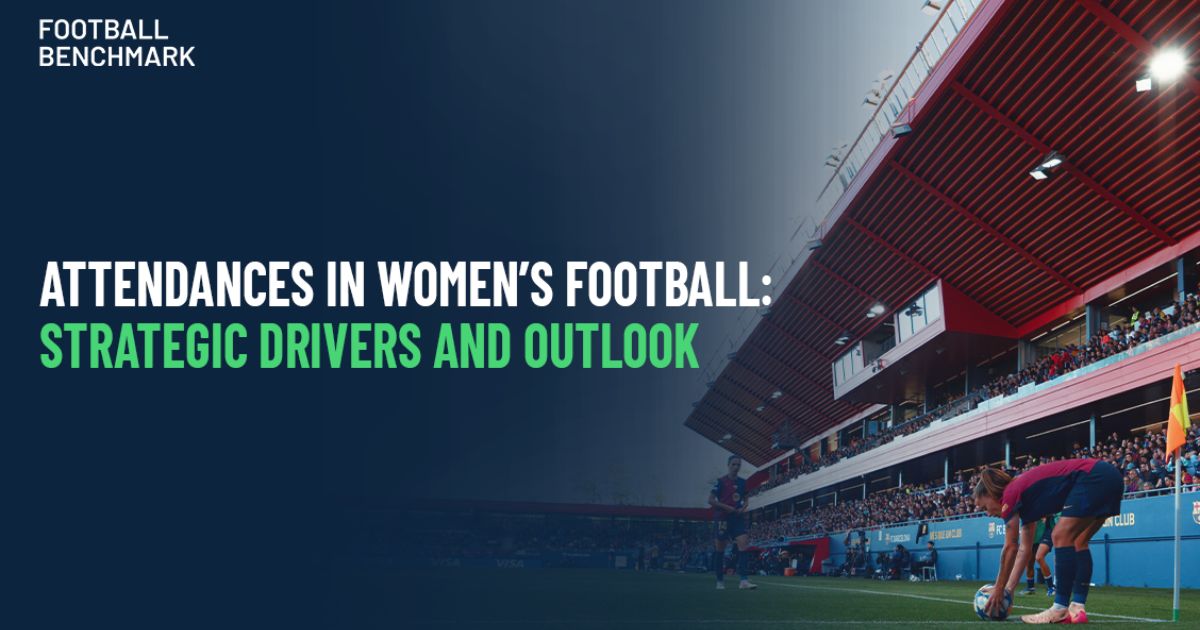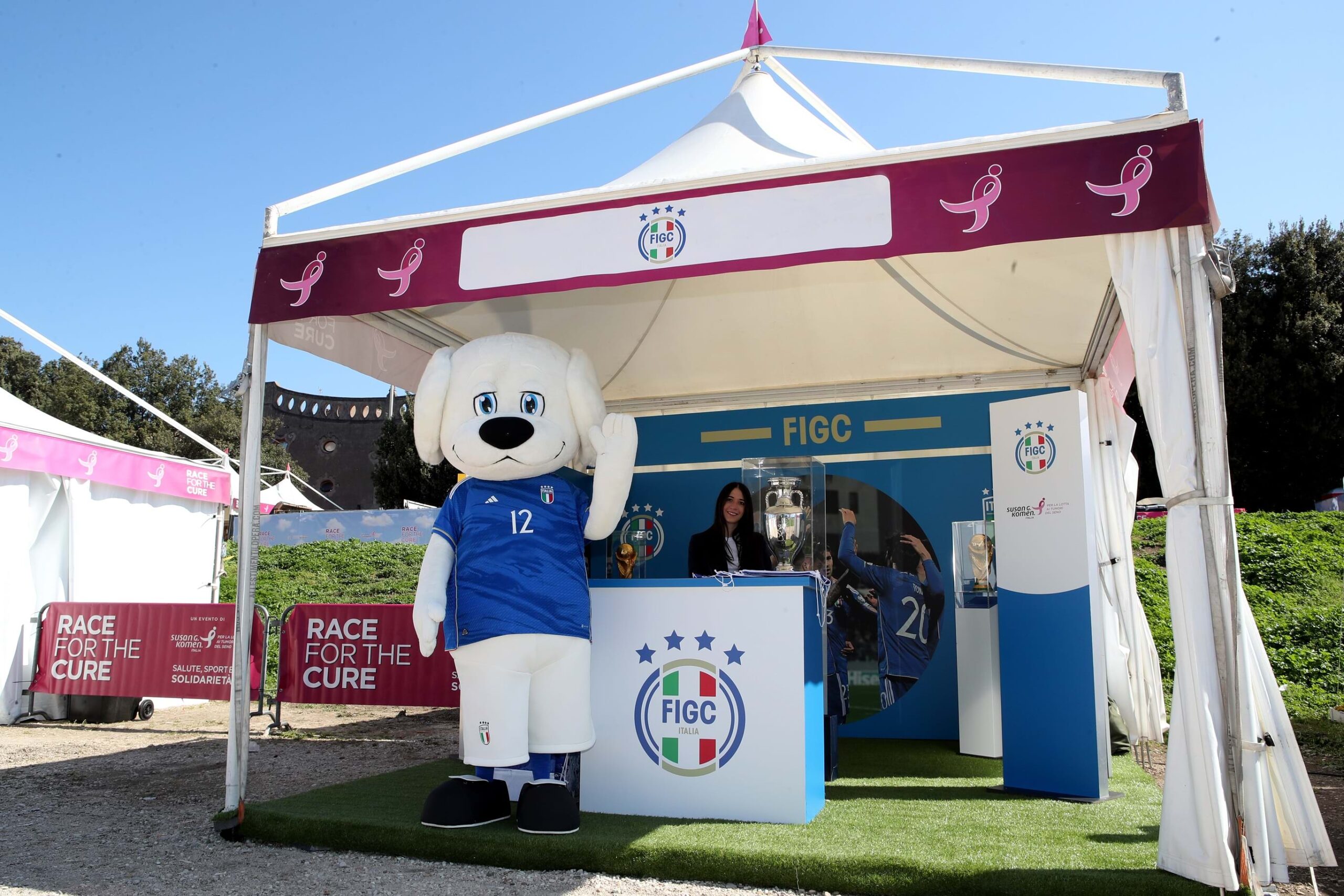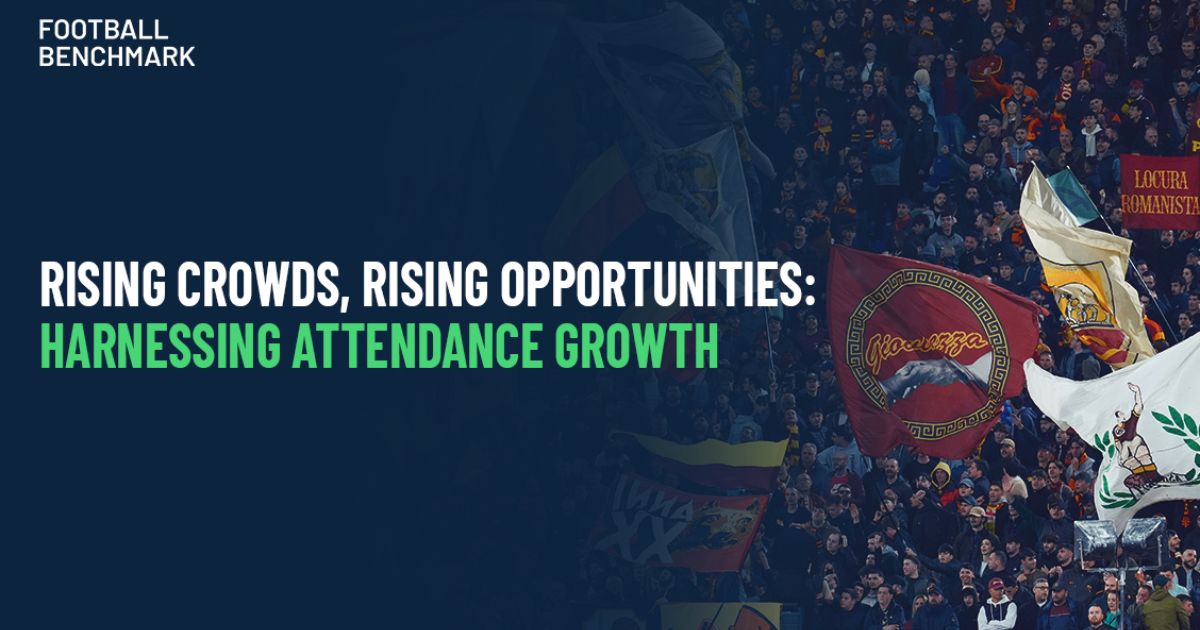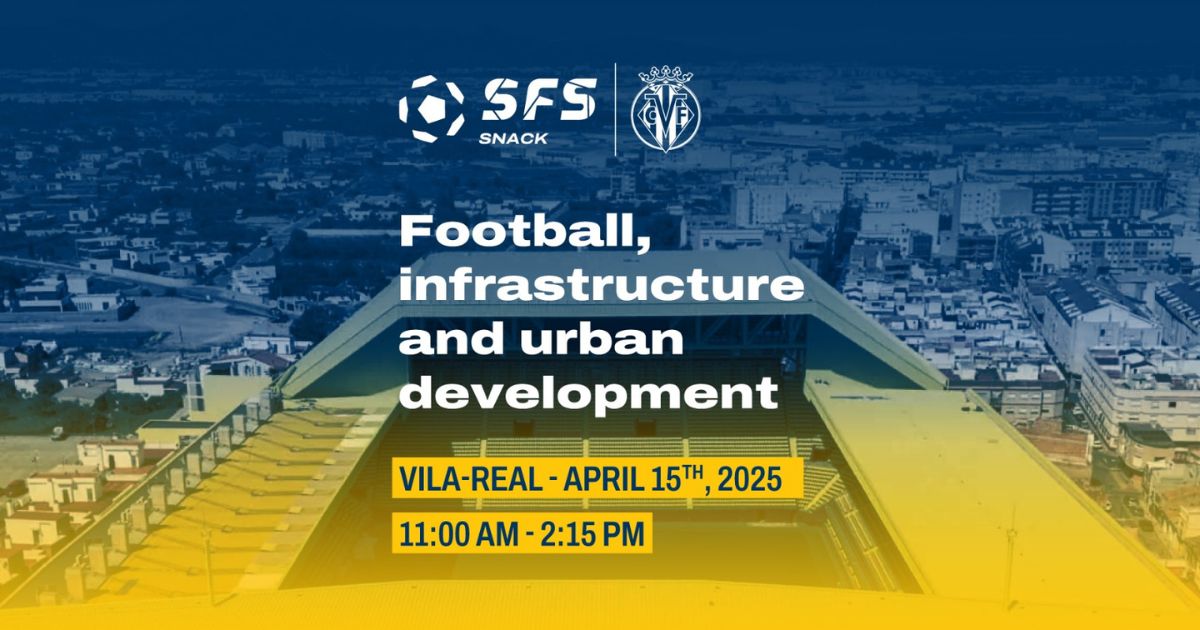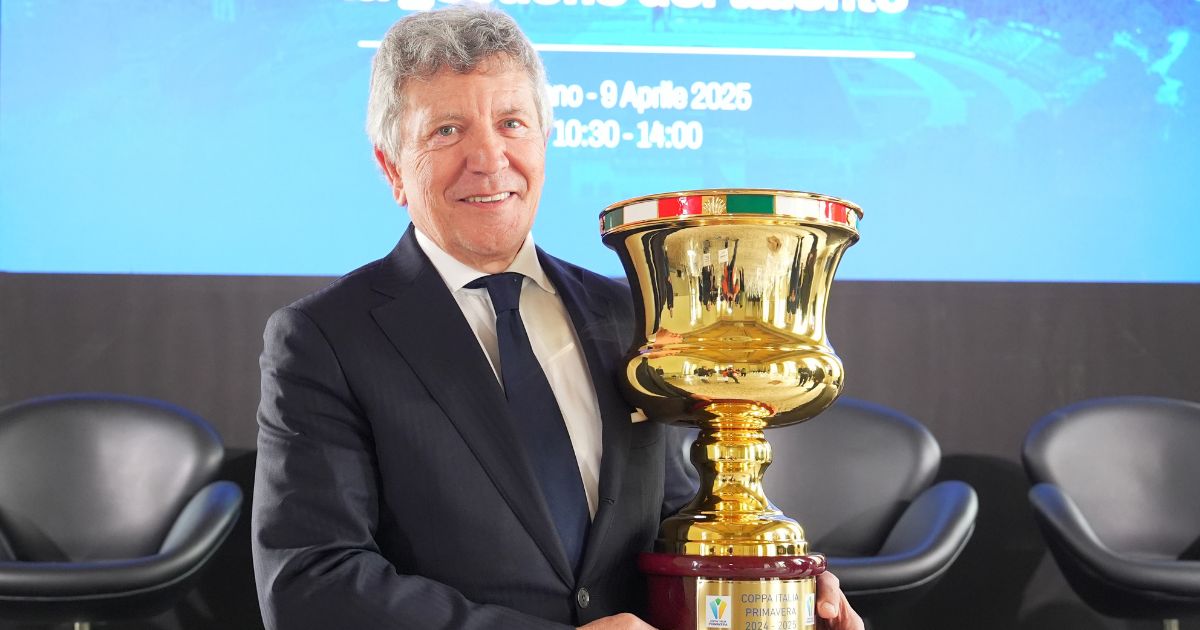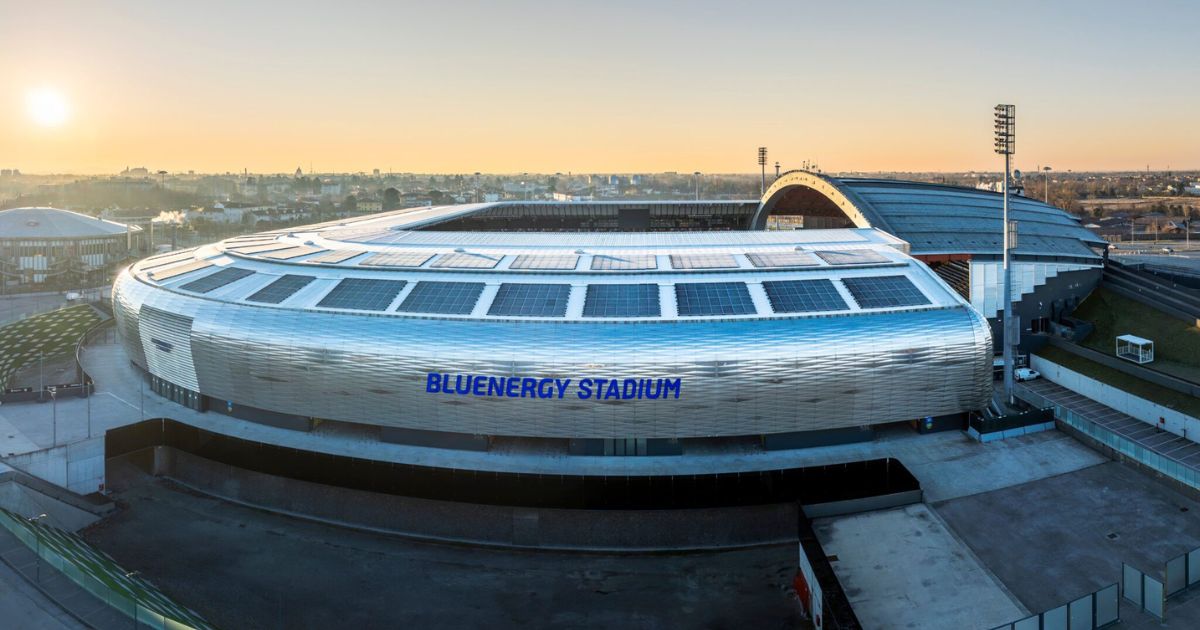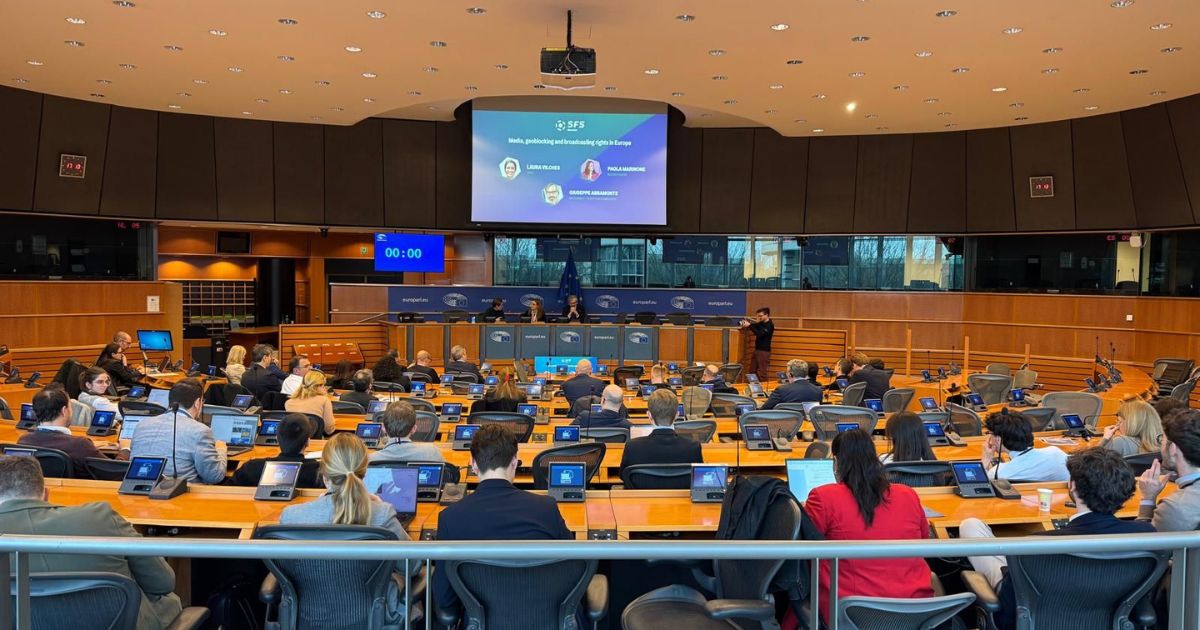Analysis by Football Benchmark
Following last week’s analysis of rising matchday attendances in men’s football, this article shifts focus to the women’s game — where recent seasons have seen promising momentum. European women’s football is gaining traction through increased media coverage, and growing commercial interest, fueling a steady rise in stadium attendances. Yet, infrastructure constraints, intensified competition for fan attention, and misaligned stakeholder priorities have hindered a more cohesive and systematic approach to growing stadium audiences. In a market where significant media revenues are yet to be unlocked, matchday income is set to become a vital pillar of the sport’s commercial model. This article analyses attendance figures and key drivers across UEFA’s top four women’s football leagues – England’s Women’s Super League (WSL), Germany’s Frauen-Bundesliga, Spain’s Liga F, and France’s Premiere Ligue.
Structural trends across leading leagues
First and foremost, it is important to acknowledge that the structural challenges of women’s football significantly impact attendances — particularly through limited stadium accessibility and a lack of mainstream promotion, which restrict fans’ ability to discover and engage with the product. Within this context, the mainstream visibility of national teams during major international tournaments has undoubtedly acted as a key catalyst. In the season following the UEFA Women’s Euro 2022 final, 2022/23, the leagues of both finalists — England and Germany — recorded the largest absolute growth in average attendance, with increases of +3,301 and +1,872, respectively. The WSL’s continued efforts, combined with England’s runner up finish at the FIFA Women’s World Cup 2023, helped push the league’s average attendance above 7,300 in 2023/24. Beyond these visibility boosts, matchday attendances across the four leagues have generally followed an upward trend since the 2021/22 season. As the 2024/25 season nears its conclusion, however, the continuation of this growth appears less certain — even if several high-profile matches are yet to be played. Nevertheless, a successful UEFA Women’s Euro 2025 this summer could once again provide a much-needed boost to domestic league attendances.
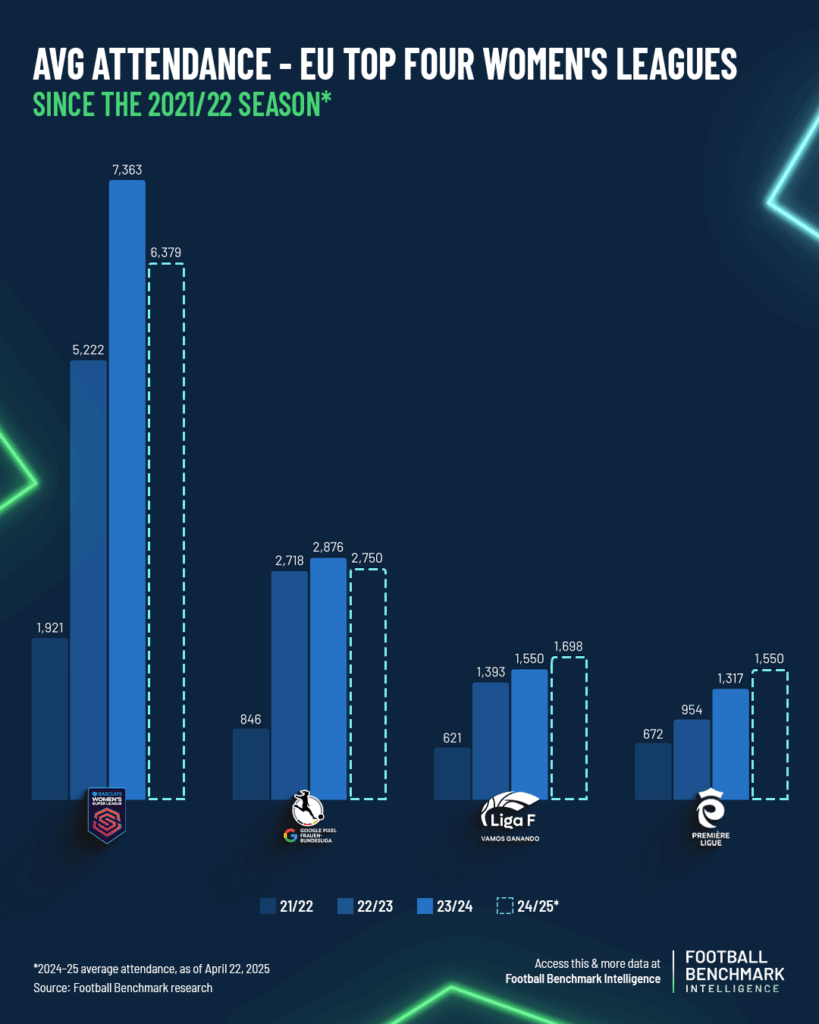
Elite fixtures: growth engines and structural gaps
An initial analysis of league data reveals a consistent pattern: marquee fixtures between top-tier clubs dominate attendance figures. Women’s football matches that combine elements such as elite players, strong rivalries, quality infrastructure, and clubs with established fanbases tend to attract significantly larger crowds. In contrast, lower-tier matchups struggle to draw meaningful attendances. In Spain’s Liga F, attendance at top three clashes is on average 18 times higher than for lower-half fixtures, highlighting the league’s strong reliance on elite clubs. Similarly, in the WSL, encounters between top five sides — particularly those based in London, Manchester, and Liverpool — regularly attract crowds up to eight times greater than matches involving teams outside the top five.
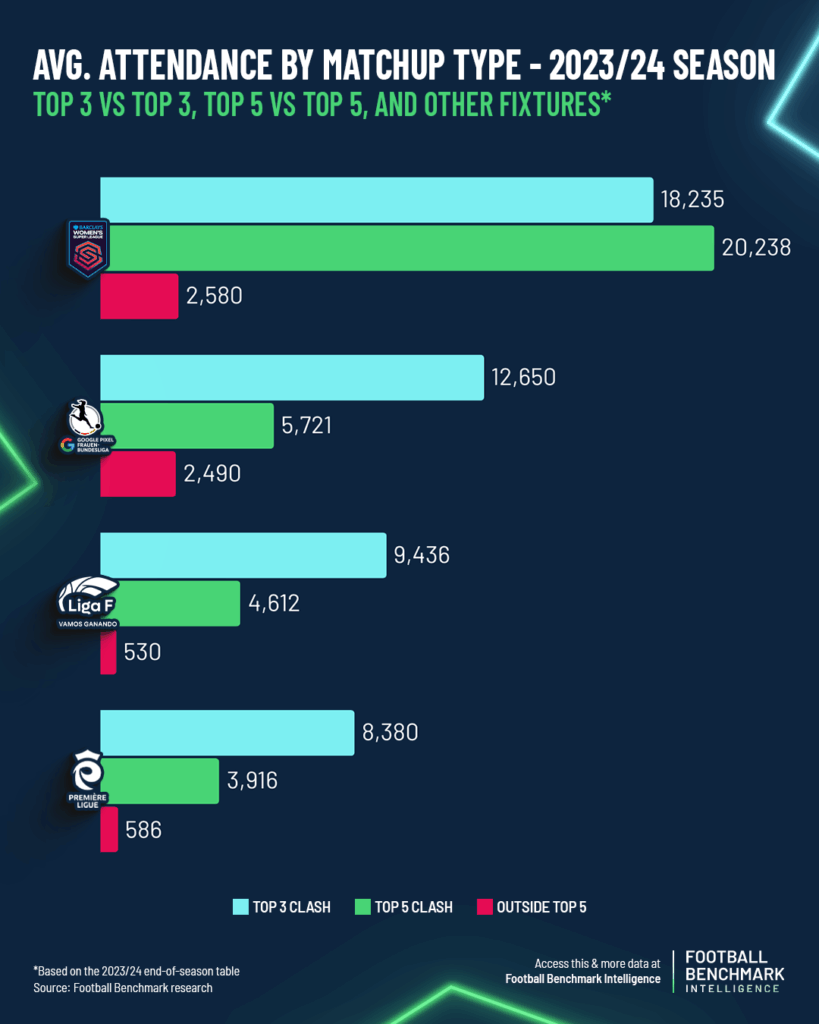
Beyond league position, local rivalries and historic derbies continue to serve as powerful drivers of demand during this early growth phase. Clubs and leagues are increasingly optimizing fixture scheduling and venue selection around these matchups, positioning them as flagship events to elevate the league’s profile. The Manchester derby, for example, has consistently attracted over 40,000 spectators at the Etihad Stadium — more than ten times Manchester City’s average turnout outside of derby matches, typically held at the 7,000-seat Joie Stadium. In Spain, El Clásico between FC Barcelona and Real Madrid has drawn crowds approaching 39,000 at the Lluís Companys Olympic Stadium, compared to FC Barcelona’s league average of fewer than 5,000 at the 6,000-seat Johan Cruyff Stadium. In this context, both the German Frauen-Bundesliga and France’s Premiere Ligue face a unique challenge: the absence of several historic men’s clubs from the women’s top tier. In Germany, major names like Borussia Dortmund, Hamburg, Schalke, and Stuttgart remain outside the top flight; in France, clubs such as Marseille and Lens are similarly absent. Recent examples highlight the untapped potential — a recent cup derby between Hamburg and Werder Bremen drew 57,000 fans to a sold-out Volksparkstadion.
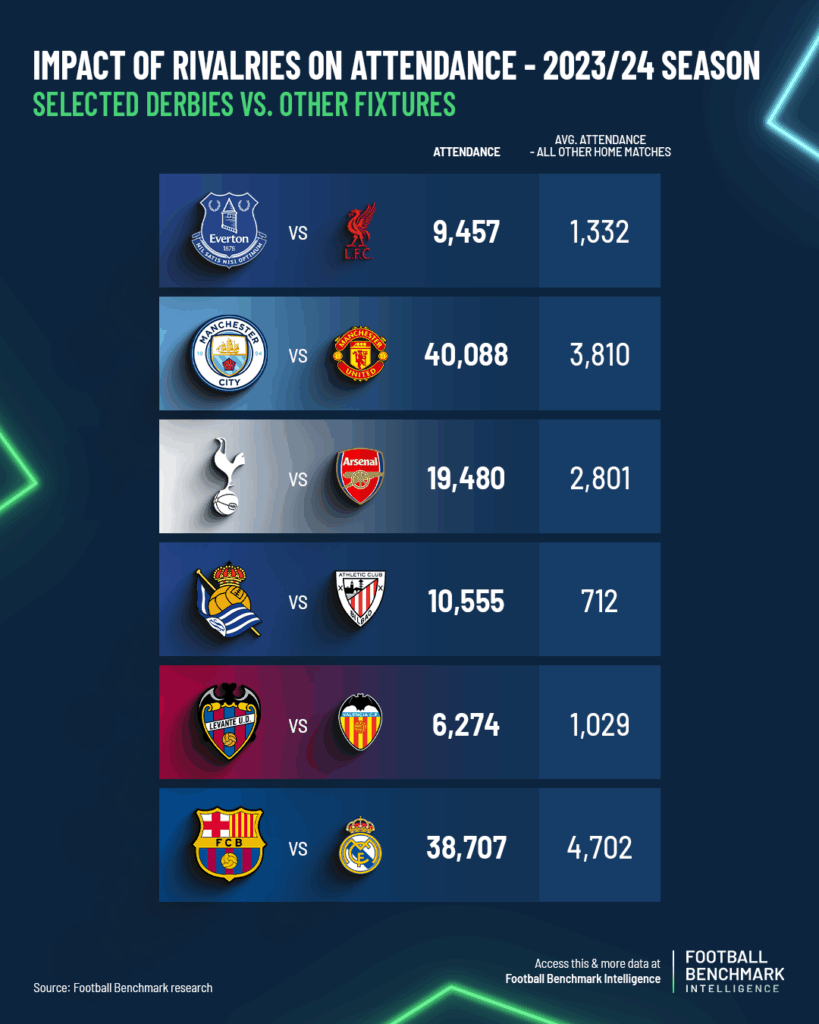
Calendar optimization: strategic match scheduling
Given the impact of marquee fixtures, the complexity of the women’s international calendar, and the ever-busy global football agenda, strategic match scheduling remains one of the most effective — yet underutilized — levers for attendance growth. A low-hanging fruit in this area is the scheduling of high-profile matches during men’s international breaks. Data confirms that this approach delivers results, as women’s matches temporarily occupy prime calendar space with minimal competition for audience attention.
In the 2023/24 season, for example, WSL matches held during these windows reported an 80% increase in average attendance. Similar patterns have been observed in Spain (+90%) and Germany (+96%), while France has seen more muted outcomes, suggesting room for improvement in calendar coordination and promotional efforts. As a result, we expect competition formats and calendars to evolve in the coming years, as rights holders seek the ideal balance between visibility, attendance potential, and long-term growth of the women’s game.
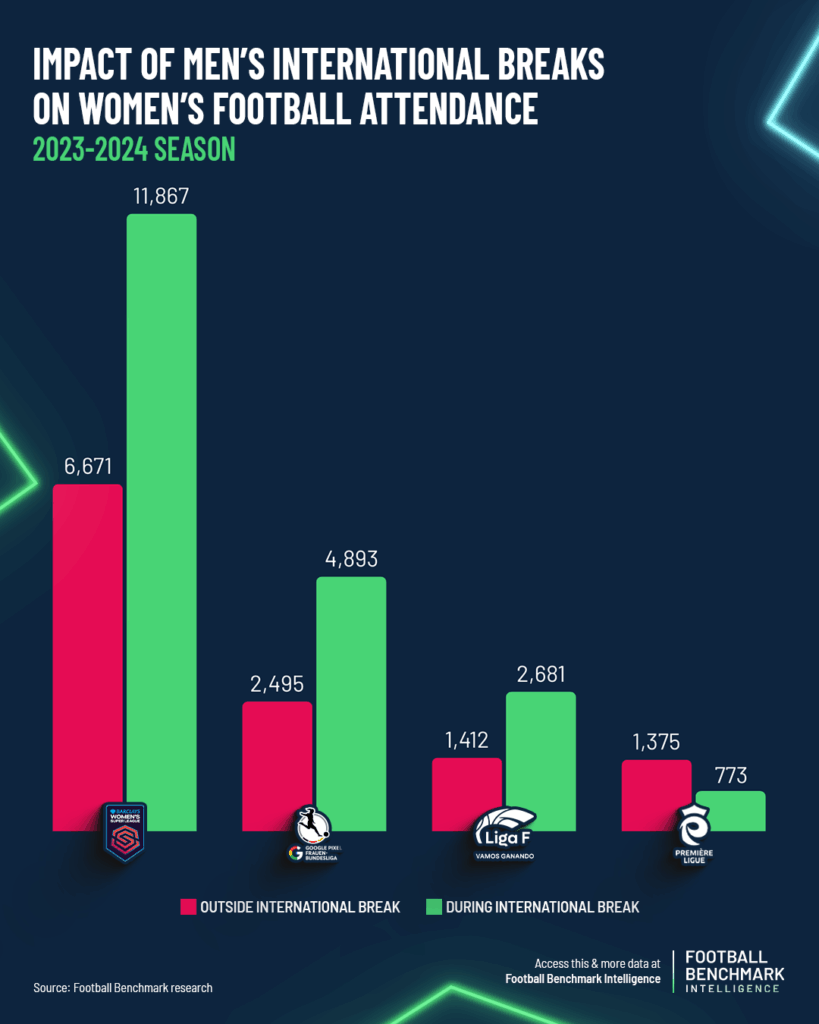
Looking ahead: from momentum to maturity
The 2025/26 season will bring transformative changes to the European women’s club football landscape, with the launch of a revamped UEFA Women’s Champions League and the inaugural UEFA Women’s Europa Cup. These developments are expected to expand access to European competition, providing more clubs with a clear incentive to invest and compete at a higher level. Drawing parallels with the expanded UEFA Champions League in the men’s game, the new formats could increase competitiveness and raise the stakes for a broader group of clubs. The women’s club football ecosystem shall leverage this opportunity to support the evolution from episodic spikes in attention to a model rooted in sustained engagement.
While these changes may intensify competition at the top of the table, maintaining relevance across the full league standings will remain a challenge in the short term without further structural reforms. The task ahead is not only to grow the game, but to do so sustainably — ensuring that women’s football evolves from moment-driven visibility to lasting relevance across the calendar and throughout the league.
Attendances in Women’s Football: Strategic Drivers and Outlook
Analysis by Football Benchmark Following last week’s analysis of rising matchday attendances in men’s football, this article shifts focus to the women’s game — where recent seasons have seen promising momentum. European women’s football is gaining traction through increased media coverage, and growing commercial interest, fueling a steady rise in stadium attendances. Yet, infrastructure constraints, intensified competition for fan attention, and misaligned stakeholder priorities have hindered a more cohesive and systematic approach to growing stadium audiences. In a market where significant
FIGC on the field with Komen Italy: a Blue Team for the Race for the Cure against breast cancer
This news was published, as news, on the official website of the FIGC. Also for the 2025 edition, scheduled to be held in Rome on May 11, the Federation will have its own booth with the trophies won by the national team in the Health, Sports and Wellness Village at Circus Maximus and will form its own team Also for the 2025 edition, scheduled for Sunday, May 11, in Rome, FIGC is joining the Race for the Cure, the signature
Rising Crowds, Rising Opportunities: Harnessing Attendance Growth
Analysis of Football Benchmark The booming live event and experience economy is reshaping how consumers prioritise their time and spending — and football is uniquely positioned to benefit from this broader trend. Across Europe’s top leagues, stadiums are now brimming with energy and expectation, as matchday attendance surpasses pre-pandemic norms. This resurgence is more than symbolic. At a time when media rights revenues are plateauing for many clubs and commercial growth is maturing, rising attendances — coupled with a fresh wave
AMB Elettronic is a Partner of the SFS
SFS is pleased to announce a partnership with AMB Elettronic, a leading Italian company in the field of electronics applied to sports. Founded in 1994 in Adria (RO), AMB Elettronic specializes in the design and manufacture of electronic substitute scoreboards used in international sporting events and recognized by organizations such as FIFA and UEFA. The quality and innovation of AMB's products-including the famous Delta whiteboards with LCD display and programmable memory-represent a perfect example of made-in-Italy excellence. In addition to this,
SFS and Villarreal CF present SFS Snack: “Soccer infrastructure and urban development”
SFS (Social Football Summit) and Villarreal CF are proud to announce the next edition of SFS Snack, a short-form international conference dedicated to the soccer industry, to be held on April 15 at the famous Estadio de la Cerámica. SFS Snack Vila-real will bring together high-level speakers, including representatives from major clubs such as Villarreal CF, AS Roma and Valencia Basket Club, as well as managers of international brands such as Ascale. The event, titled "Football, infrastructure and urban development," will
“FROM YOUTH FOOTBALL TO BIG-TIME FOOTBALL: TALENT MANAGEMENT”
The conference, organized by Lega Serie A in collaboration with SFS, was held before Milan-Cagliari, the Primavera Coppa Italia Final. Yesterday morning, in the prestigious setting of the Palazzina Appiani inside the "Gianni Brera" Civic Arena in Milan, the conference "From Youth Football to the Football of the Grown-ups - The Management of Talent" was held, organized by Lega Serie A and the SFS, on the occasion of the 2024/2025 Primavera Italian Cup Final. The meeting was an opportunity to take
Bluenergy Stadium solar farm at the center of soccer’s first energy community
Press release published on the official website of theUdinese Calcio. An unprecedented sustainability and solidarity initiative comes to life around the 1.1 MWh/year photovoltaic park at Udine Stadium Udinese Calcio and Bluenergy Group's joint commitment to environmental and social sustainability takes an extraordinary new step today. As the two clubs announce the completion of work on the photovoltaic system housed on the roof of Bluenergy Stadium, a new project involving the Friuli Venezia Giulia region and society comes to life. THE ENERGY COMMUNITY "Energy
SFS at the European Parliament: A Success for the Future of European Football
SFS Snack Brussels – Football and Europe: rules, rights and priorities The SFS Snack Brussels event concluded with great success, bringing the debate on European football governance to the heart of European institutions. Hosted at the prestigious European Parliament, it provided a unique opportunity for institutions, experts, and industry professionals to discuss the regulatory, economic, and social challenges that will shape the future of football in Europe. The event was introduced by institutional remarks from MEP Nicola Zingaretti "uniting Europe means uniting society and



